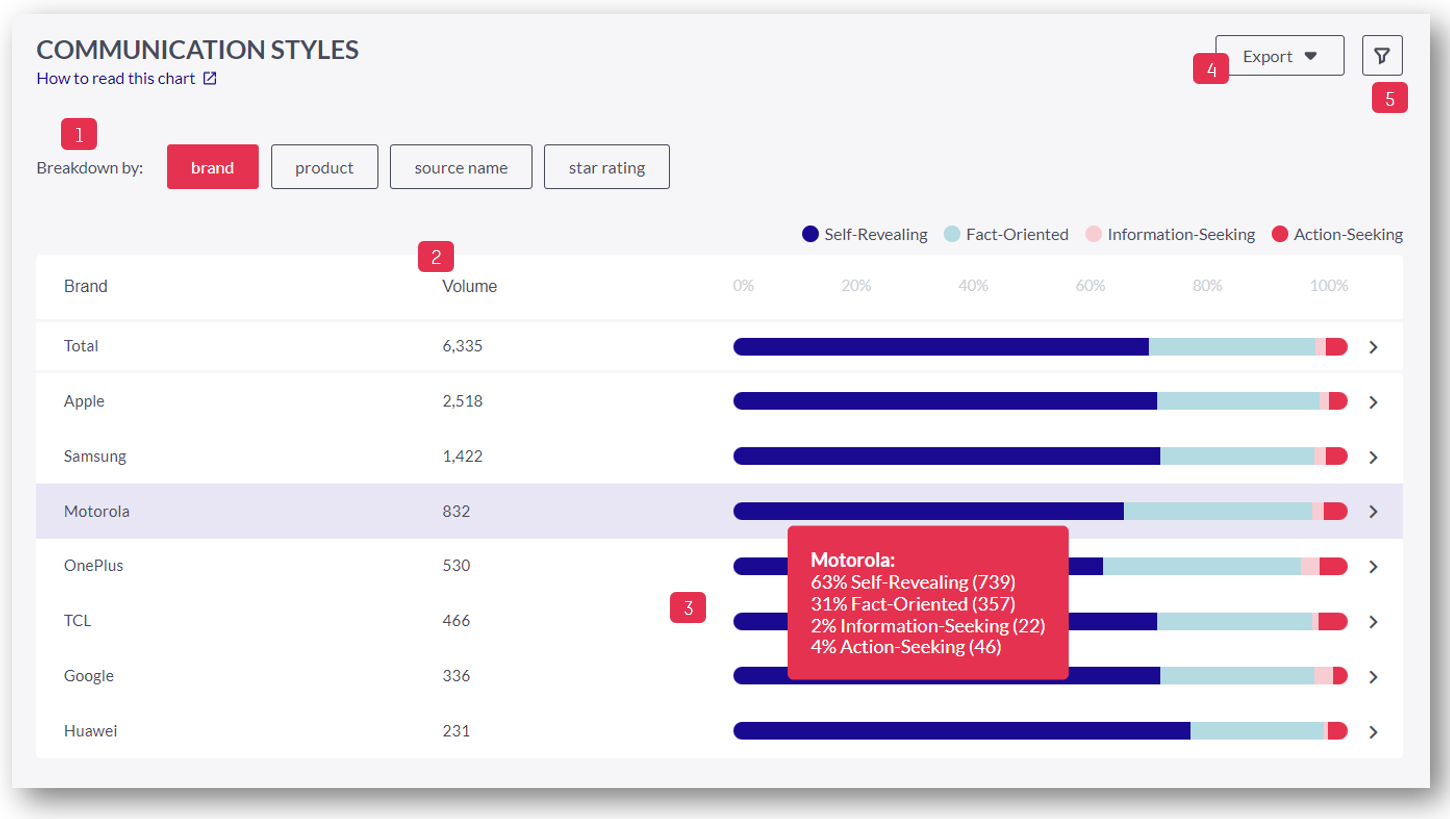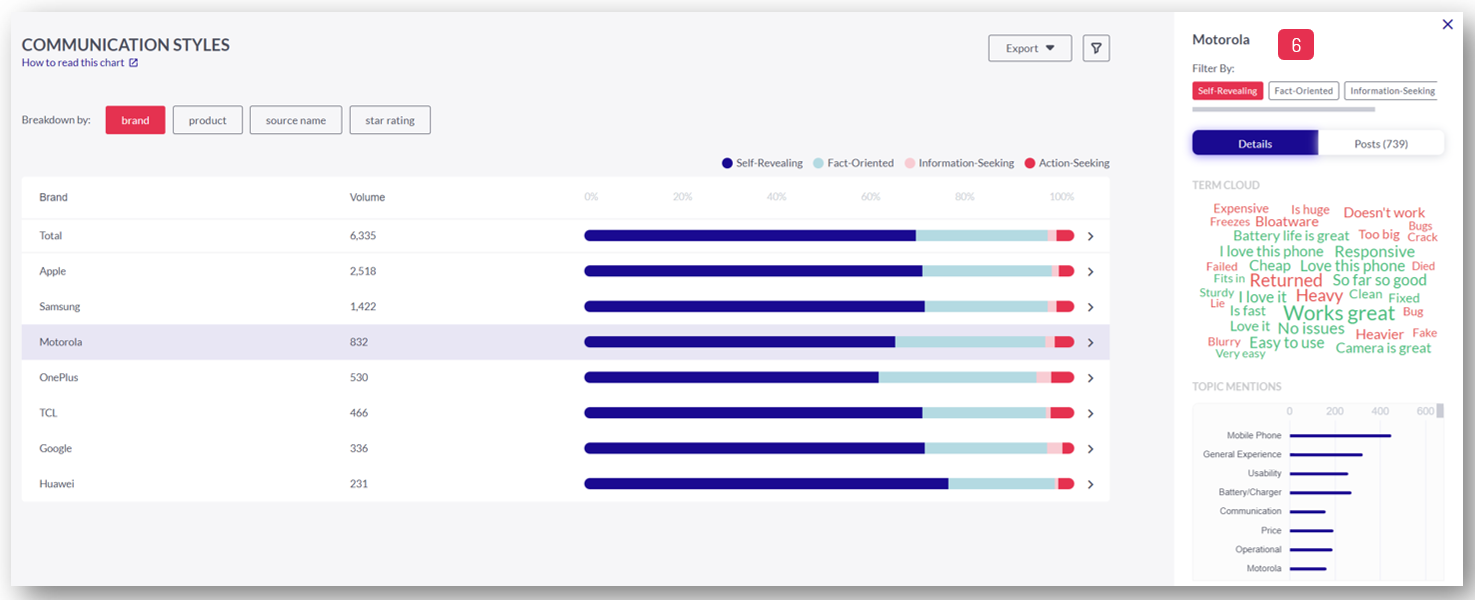1. What is communication style?
2. How to use Communication Styles
1. What is communication style?
We define communication style by two sets of polar dimensions: self-revealing or fact-oriented and information-seeking or action-seeking. Together with the personality traits (How to use Personality Traits) they help define the consumer segment to target, develop truly resonating messaging platforms and guidelines for marcomm purposes, and more.
Communication style, once defined by the four characteristics, helps us detect the purpose of that text, which gives us a lot of valuable information about the author.
It’s important to remember that while the two sets of polar dimensions find themselves on extreme sides of the circle, it does not mean that people cannot represent a blend of both polarities. Let’s get into what each of these characteristics means:
1) Action-Seeking vs. Information-Seeking
Here we are referring to the communication details that a person uses in their communication, whether a social media post, a survey answer, a review, etc. We have seen that the communication details that a person uses in their own style of writing are often the preference for communication details that they themselves relate to best.
- Action-Seeking can be defined as writing in a manner that aims to trigger someone’s action be it by giving recommendations, giving advice, or making requests.
- Information-Seeking can be defined by someone who poses questions, who engages through questions. They communicate in a manner that actively, as the name entails, seeks information.
2) Fact-Oriented vs. Self-Revealing
When looking at this set of characteristics, fact-oriented versus self-revealing, we are looking at how a person forms their opinion and therefore expresses it. This is basically determined by what information a person chooses to describe their opinion.
- Fact-Oriented content/posts are built using facts to describe their opinion about something.
- On the other hand, Self-Revealing-driven content/posts rely heavily on personal experience and opinion.
How do these differ? To better picture how these two dimensions, here’s an example of a bar review:
 Here we can see the first review text which is fact-oriented is much more based on facts whilst the self-revealing-driven review text is based upon a personal experience and opinion of the customer.
Here we can see the first review text which is fact-oriented is much more based on facts whilst the self-revealing-driven review text is based upon a personal experience and opinion of the customer.
2. How to use Communication Styles

1. Apply the 'Breakdown by' depending on the meta values of your data (e.g. brand, product, source, etc.)
2. Volume shows the total number of posts assigned to the selected meta value.
3. The bar charts show the distribution of the different communication styles in a 100% stacked chart style. When hovering over the bar charts, you will see a comparison of relative and absolute numbers.
4. Click here to export the data as CSV or PNG.
5. Apply Slicing filter: You can slice by category, topic, personality (emotional/rational), psychographic segments, your own meta values, enter a date range or search for specific keywords.

6. The sidebar contains a filter for all the communication styles, which affects the underlying charts. The term cloud shows the phrases linked to the selected communication style, while the topic mentions allow exploring the top-mentioned topics.